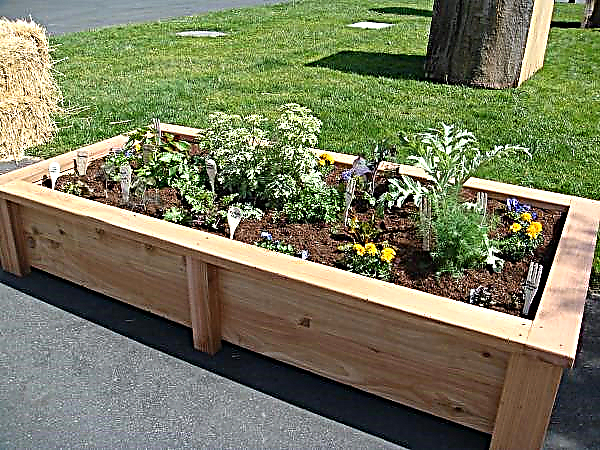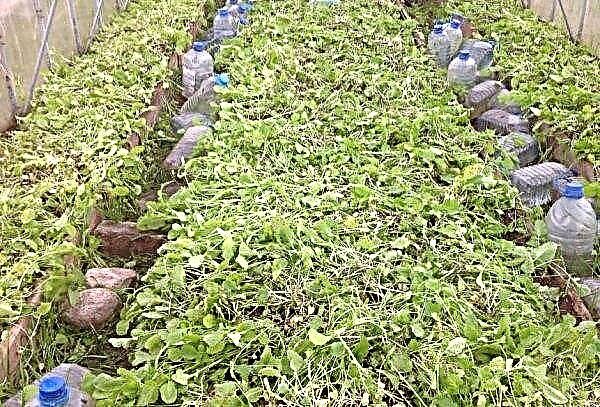Potted tulips are often presented for spring holidays such as Easter and March 8th. They decorate gardens and flower beds when there are so few bright colors around. Learn how to properly plant bulbs in pots at home, and you will surely be able to please loved ones with wonderful spring flowers.
Is it possible to grow tulips at home
Hybrid tulips are incredibly beautiful, but their cultivation is accompanied by many complex rules and cautions. Most varieties do not grow well on the window, where housewives put pots at home. Therefore, the main thing is the correct selection of tulips.
For growing a house on a windowsill, bulbs are suitable:
- terry early varieties with a peduncle height of up to 30 cm;
- medium early, Triumph class;
- two-color tulips of the varieties Kaufman and Foster.

They can be grown one at a time. Or they can be planted in containers several at a time, forming bright color compositions. Tulips successfully grow in containers with an external height of at least 30–38 cm and an outer diameter or width of about 40–45 cm. Using smaller pots reduces the viability of the bulbs.
Varieties of any type and color get along well in the group. About 18–20 bulbs can be planted in a container. They are selected for the same flowering time. If you combine so that some of them bloomed this week, and another part next week, such a composition will look less beautiful than 20 simultaneously flowering copies.
Important! For indoor planting, choose larger bulbs. They do not need time to ripen, so they will bloom before others.
What are the conditions for growing
The peculiarity of the bulbs is that they are not able to physiologically inactive. This means that they need constant air exchange and a certain humidity. Until sowing, they are stored in a dry, well-ventilated room at a temperature of + 20 ° C and humidity 60–70%. During this period, the flower bud is formed in the bulb.
In mid-October, the air temperature must be reduced to + 17 ° C. From this moment, you need to start preplant autumn preparation. It consists in processing the bulbs with cold. By the time this effect begins, the future plant should be fully formed in it.

The cooling process is called distillation. For early flowering varieties, it should be 16 weeks. To start, the bulbs are placed in the soil.
The composition of the mixture may be different:
- clean river sand;
- a combination of sand and peat;
- only peat;
- sand with garden soil.
Did you know? Tulips grow even after they are cut and placed in a vase. The bouquet may well grow by about 5 cm, while standing in the room.
Some gardeners advise taking 2 parts of the land from the garden, 1 part of compost and 1 part of clean sand. 50 g of ash are added to the mixture. Mixed. Fill the pot by 2/3, plant the bulbs and add soil. After planting, watered with a pale solution of potassium permanganate. Then the containers are transferred to a cool place with a temperature from 0 ° C to + 10 ° C. It will take about 4 weeks to complete this phase.. After that, the air temperature near the containers is lowered to -2 ° C and covered with a film in order to avoid excessive moisture loss.

As soon as the roots sprout, the tulips are returned to a warm room. The first few days, the lighting should be dim and the temperature around + 12 ° C. Plants can even be shaded so that they do not stretch. Lighting and temperature gradually increase. Seedlings will need to be regularly watered and provide a suitable microclimate for growth.
Capacity selection
The best pot is considered the capacity in the form of a dish. She looks very decorative. But the bulbs also grow well in pots. Any portable container should have a drainage hole in order to provide good air exchange to the bulb. Sometimes tulips are planted in baskets. This is also convenient in its own way.
Soil composition
Soil with a neutral or alkaline environment is ideal for tulips. Most of all they love the soil rich in organic compounds.. The addition of organic matter is mandatory to clay or sandy soils, because they are poor in nutrients. You can find one in your local garden center or do it yourself.

For indoor tulips, the following combination is suitable:
- sphagnum moss at the bottom of the pot;
- rich fertile soil from about the middle to the end of the pot.
Well-drained soil can pass a large amount of water. Poor quality soil does not allow water to pass through well, which means it does not provide proper plant growth and growth.
Did you know? Most tulips form one bud on one stem. But several varieties can have up to four on one stem.
Temperature, humidity and lighting
The temperature regime depends on the stage of development of the bulb. So, after collection or purchase, and until the time of distillation, the temperature should be + 20 ° C, humidity 60–70%. Then it is reduced to + 17 ° C, the bulbs are planted in containers and carried for distillation at temperatures from 0 ° C to + 9 ° C. After distillation, the temperature regime is gradually restored to + 20 ° C. And they support it until the moment of cutting or the end of the vegetative period.

Selection and preparation of planting material of the bulb
First of all, inspect the proposed planting material. All bulbs should be firm, dry, about the same weight.. On the surface there should be no damage, splits, rotted soft patches, mold spots and any darkened areas. Scales should completely cover the surface. Also, the bulb should not germinate. The approximate diameter of a good specimen is 3-4 cm.
Please note that it is very easy to injure the bulb and then it will not work to germinate, t. it goes bad. Therefore transport carefully so as not to be damaged by accidental impact.
Important! Do not purchase bulbs with roughened scales. This means that they lay in the ground, now they will sprout slowly and will not bloom soon.
How to plant a bulb
When breeding tulips on a site, always read the instructions on the packaging for the planting material. Since different varieties require a little different care. Some are planted to a depth equal to the two heights of the original bulb, others so that a tip is visible above the soil. The distance between individual specimens can be from 5 to 15 cm.
Video: Forcing tulips at home
The algorithm for placing the bulb in the pot is approximately as follows:
- Fill the pot halfway with sphagnum moss.
- Then add a layer of garden soil.
- Place onions on top of it. The distance between them is at least 5 cm.
- Add the rest of the soil so that the ends of the bulbs are visible above the surface.
- Pour so that the soil is moist.
- Put the pot in a plastic bag and close it. Store in a cool place for the entire period of distillation. Water at this time as the soil dries.

Proper care after planting
The actions of the gardener after the end of the distillation:
- Return the pot to a room with a temperature not exceeding + 10 ° C. On the first day, set dim lighting and light the pot for about 3 hours a day. The rest of the time, cover the bulbs with a dark paper cap.
- At night, the temperature near the drawers should drop. This is necessary for the good development of the root system.
- Then, every 2 days, increase the temperature and increase the duration of lighting.
- After the tulips have sprouted, they need to be regularly watered - daily or every other day. In this case, the soil must be moistened, but not flooded with water.
- For a full development cycle (before the flower) it will take 12-17 weeks, depending on the variety.
- After the tulips bloom, cut off each flower. Bulbs will have to be disposed of, since the second time they will not bloom. Or transplant them to grow new plants after the foliage dies naturally.
Important! New bulbs need more water during the growth period than when the flowering phase has passed.
Watering
Improper watering can jeopardize the development of tulips. Therefore, it is important to know about watering that:
- a tulip does not like excess water and needs drained soil;
- the bulb may be deformed, and the flower will not be too lush, if the soil is allowed to dry.
Therefore, tulips are watered several times a week. But they do it so that the soil is moist, but not abundantly flooded. The frequency of irrigation is checked according to the condition of the soil. If the top 3 cm have dried out - it's time to water.

Top dressing
To ensure good flowering, feed the bulbs every 7-10 days with potash fertilizer next year. (20 g of potash fertilizer per 10 liters of water). Start feeding as soon as shoots appear. Stop as soon as the foliage begins to die at the end of the season.
Some sources indicate that in addition to potassium, nitrogenous fertilizers in the form of ammonium nitrate can be added. It can be added to an aqueous solution of potassium fertilizer in the same volume - 20 g. In stores you can also buy ready-made mixtures that are suitable for tulips - “Floran”, “Garmavit”, “Herbasol”.
Did you know? If you brought home a bouquet of tulips, change the water in the vase every other day and refresh the cut. This will help them stand longer. 1/2 teaspoon of lemon juice, dissolved in water, will also help longer flowering.
Pest and Disease Control
There are not many problems that can be encountered if the bulbs grow in pots. Probable street pests include slugs and snails. But since there are no insects in the room, there is nothing to worry about.
As for diseases, they are most often the result of improper watering. Excessive moisture can cause rot: gray rot, root, soft, botrythic. Bulb rot cannot be seen at the time of occurrence. And when this happens, it will be too late to fight. As a prophylaxis, it is necessary to observe the intensity of irrigation and carry out preliminary processing of both soil and planting material with disinfection using a pale pink solution of potassium permanganate. During budding, you can spray with a 1% solution of Bordeaux fluid.

Tulip cultivation is a complex variety of floriculture. But if you have a desire to grow these wonderful spring flowers on the windowsill - be sure to try. Caring for them is not as difficult as it seems.












